ONCE UPON A TIME IN… HOLLYWOOD Explained
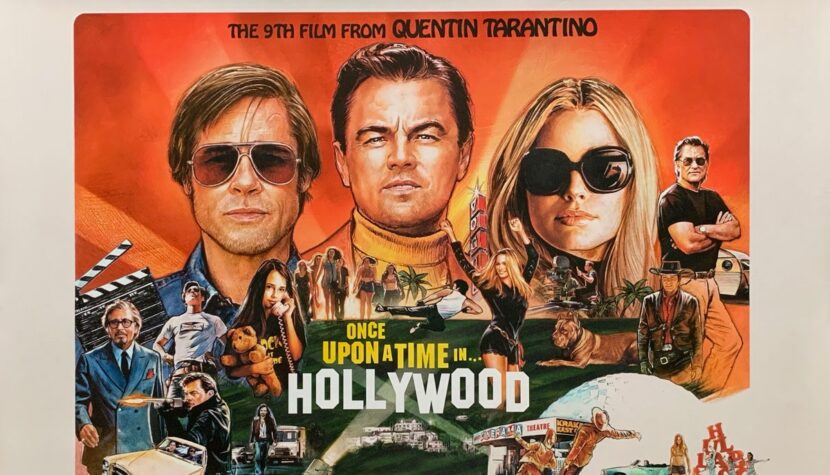
I don’t need to issue a spoiler warning, right? Is everyone sure how it ended? And that it was completely different from how it really ended?
Well, here we go. American cars are even bigger than American dreams, and no one drives one like Cliff Booth. A guy with the face of Brad Pitt offers a journey through time, and I won’t resist. For the price of a ticket, I’m transported to the dream factory, in both senses of the phrase: to Hollywood at the peak of its magic and to a land of longing, visions, and my-not-my memories—implanted memories, a kind of collective memory shared by cinema lovers. Cliff will take me through the alleys of Los Angeles and movie sets, and I’ll be deeply grateful for the lack of haste on this sun-drenched, acid-tinged trip. Nostalgia. Melancholy. This is the most subtle, most ephemeral of the American director’s works so far. Tarantino reveals himself as an impressionist, constructing a surprisingly coherent whole from a swamp of irregular dot-scenes, a shimmering collage of fleeting moments, as fleeting as a flyer. What is he trying to capture? Times he has no right to remember, but that shaped him as a cinephile. And what will stay with me after Once Upon a Time… in Hollywood? Once Upon a Time in… Hollywood
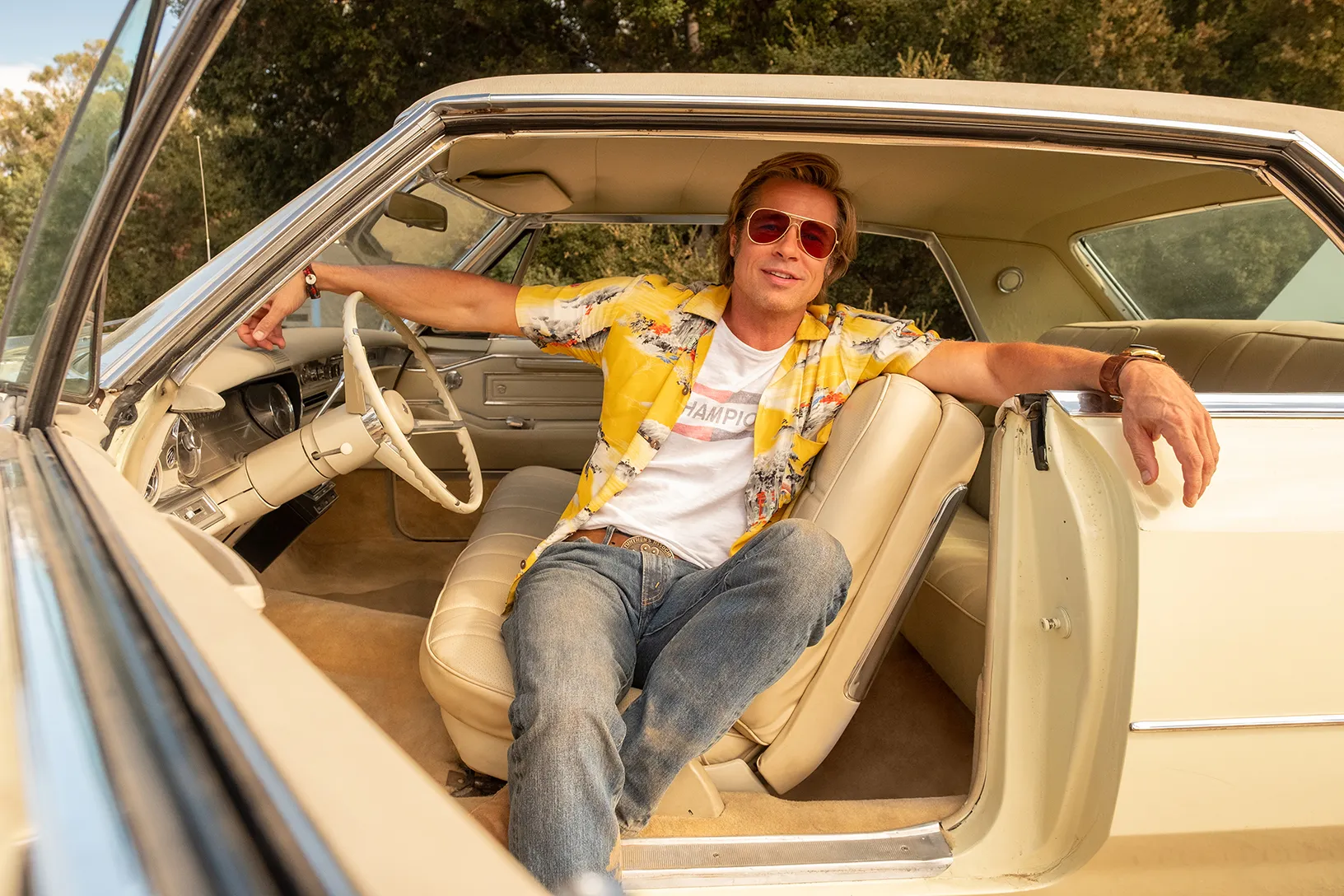
A 55-year-old Tyler Durden jumps onto the roof and takes off his shirt. What is he trying to reveal to us? Above all, that nothing has changed: he’s as magnificent and alluring as he was twenty years ago when he inducted Edward Norton into Fight Club. Brad Pitt, in Tarantino’s hands, once again plays the role of a fantasy figure. He is a character that’s overtly cinematic, almost comic book-like, endowed with supernatural powers, casually beating up Bruce Lee. All the admiration and glory for his stunt feats, however, flows onto Leonardo DiCaprio’s character, Rick Dalton, the actor he works for. Rick lives in a kind of simulation, a perpetual lie built into the profession of a movie star. On screen, he plays various Cliffs, as if borrowing from the uniqueness of his stuntman, but off-screen, after the cameras stop rolling, he appears as a whiny, emotionally immature egocentric. Cliff and Rick are like a split personality of cinema, two of its aspects. The first man embodies the big-screen charm, stories larger than life, people more beautiful than Apollo, special effects, enhanced colors, the compensatory function of art. Rick, on the other hand, represents the behind-the-scenes reality, the stripped-down, raw truth about Hollywood—the sweat and tears of the production process, the small, imperfect people who manufacture our dreams and unforgettable impressions. And I feel like it’s not just Brad’s chest that’s being revealed here, but Tarantino himself. Cliff is his almost unanimously celebrated films. Rick is him, their creator, far less beautiful, far more average.
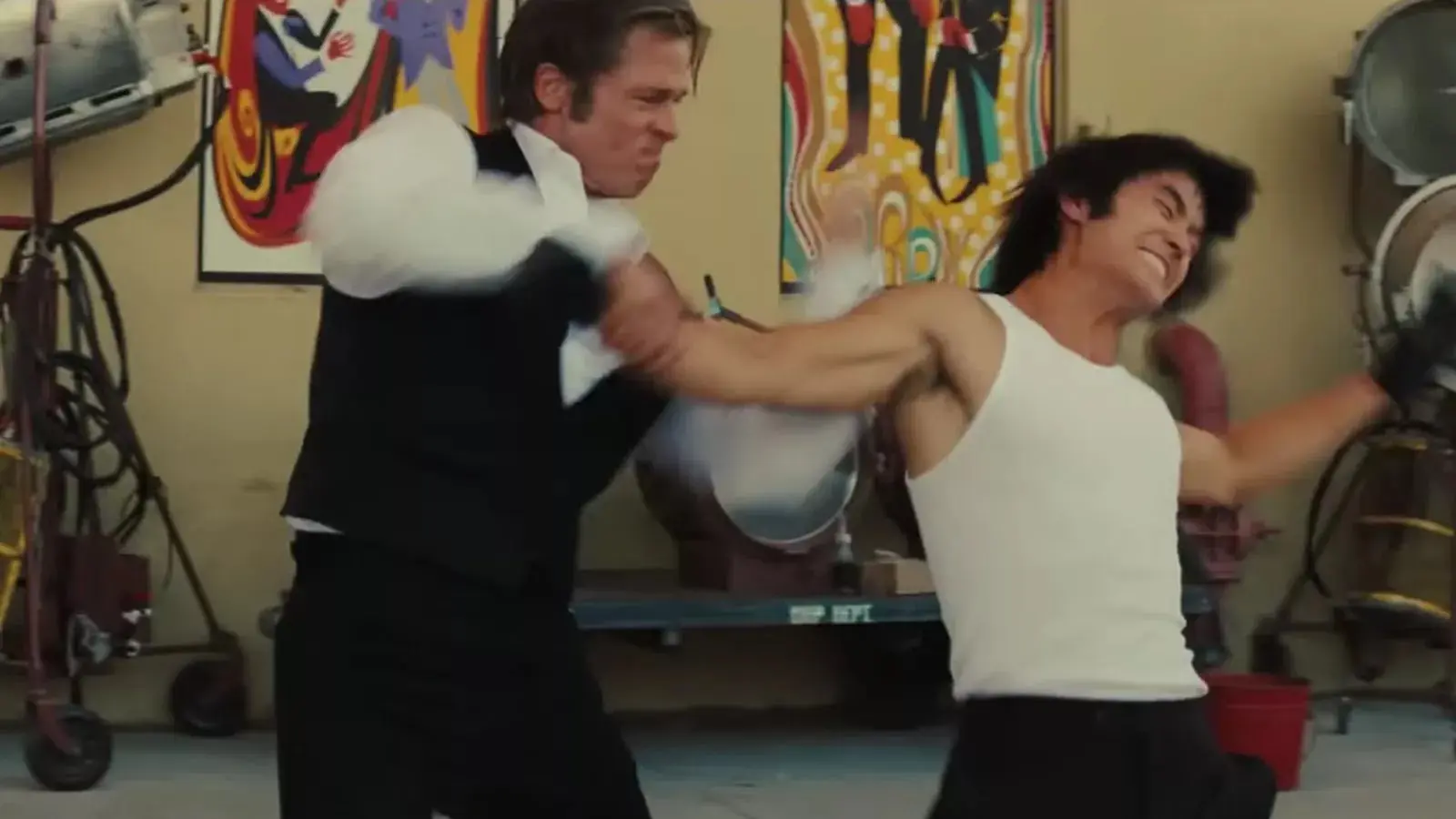
Leonardo DiCaprio cries while explaining the plot of a pulp western to a little girl. Dalton is a character who is a bit funny, a bit pathetic, but Tarantino has always had a sense of humor about himself. Yes, I still see Rick as the director’s alter ego, not only because both consume similar pop culture products and marry Italian women. Tarantino has never spoken so directly about the art and nature of creation through the mouth of a fictional character. A poignant sense of burnout. The fear of being forgotten and irrelevant. The feeling that he’s no longer as good at his craft as he once was. Behind the facade of the tough movie guy hides an artist who is forever uncertain of his talent, dissatisfied with himself, drowning his weakness in alcohol. A narcissist, surrounded by his own images, subordinating everyone to himself, subordinating himself to work, leaving for it at dawn, returning at dusk. His shaky ego suffers from bipolarity, jumping from self-admiration to self-torment, with no middle ground. The creative process in a nutshell: long and exhausting self-battles to spark, even for a moment, that fleeting flame of genius. To hear from the same little girl, who earlier understood our tears, that it’s the best acting she’s ever seen in her life.
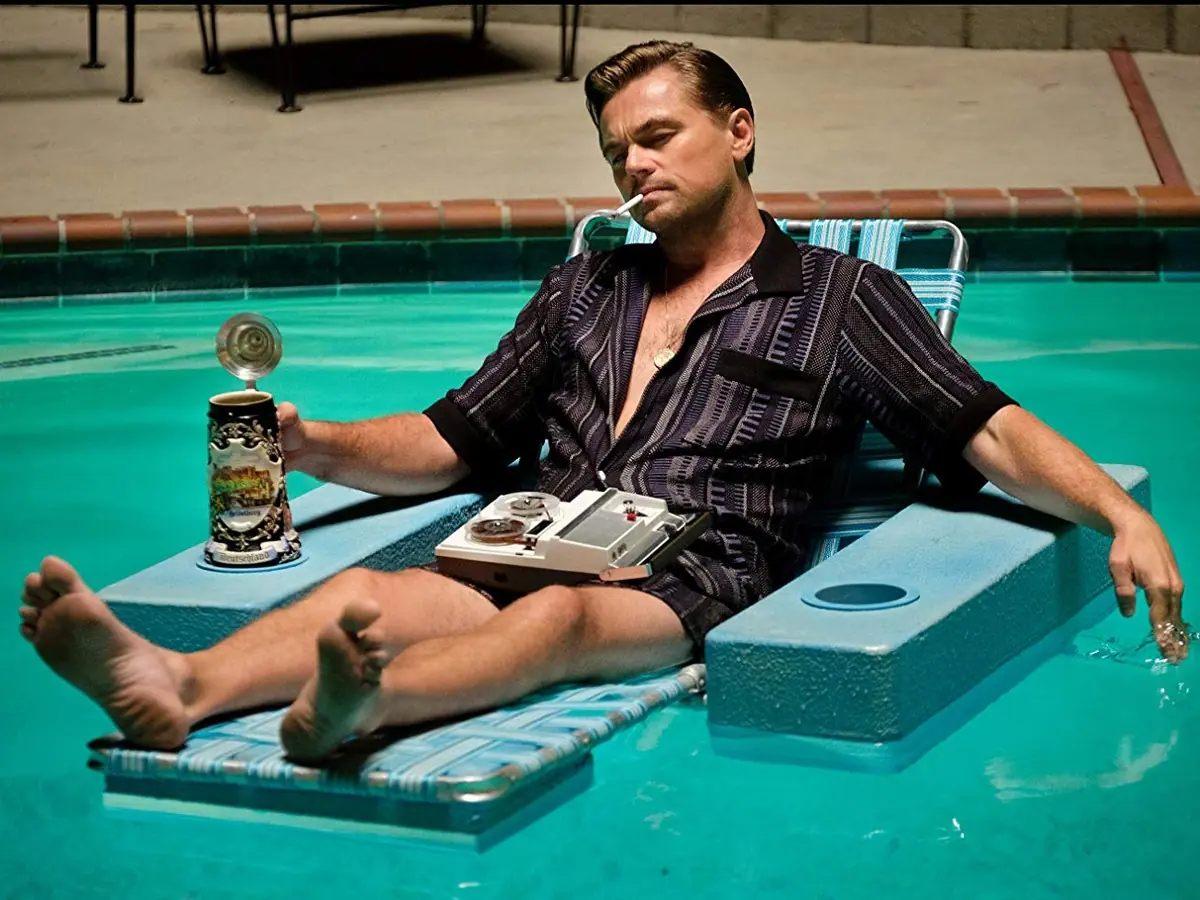
Sharon Tate watches herself in the cinema—and experiences childlike joy seeing that the audience enjoys her role. Michał Oleszczyk wrote on his fan page that it’s the most beautiful scene Tarantino has ever filmed. Tarantino, on the other hand, had to defend how he portrayed Sharon Tate in his movie. He was criticized for how little Margot Robbie does in Once Upon a Time… in Hollywood, which was promoted as a story about the character she plays. Some even said Tate’s character was unnecessary in the film. For me, she is crucial. Her subplot makes the entire story about the fragility of human life, shifting the film into existential territory. Sharon celebrates her everyday life, unaware that death looms over her. The audience, however, is fully aware of this, and the rhythm of her carefree steps transforms in our ears into the ticking of a time bomb. All those pleasant, banal moments that make up Tate will dissolve like tears in rain, to quote another lamented loss. The way and timing of how her story ended in real life were dictated by pure chance. I haven’t been as moved in a cinema in a long time as I was during the final scene of Once Upon a Time… in Hollywood, when chance turns out to be exceptionally fortunate in the alternate reality created by the director.
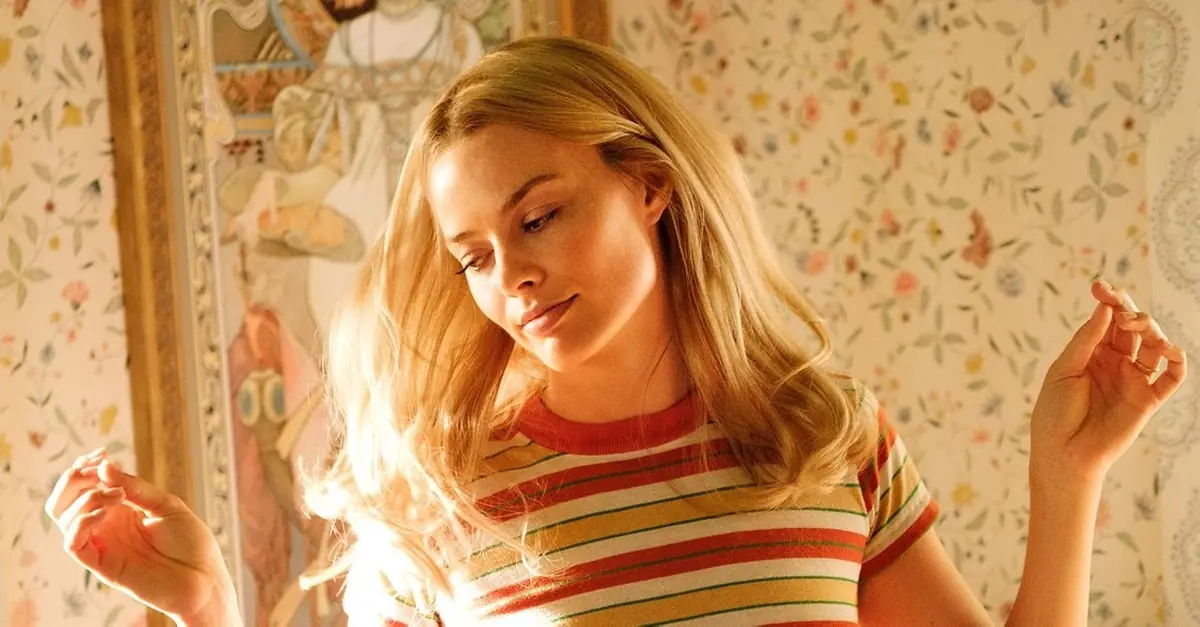
And I truly don’t know a more beautiful way to honor the fate of a tragically lost person than by showing them in moments when they were happiest. Margot Robbie didn’t need to say much at all. Every time she appeared on screen, I felt a difficult-to-describe combination of awe and sorrow. Sharon Tate wasn’t meant to be another typical Tarantino heroine; that would have been distasteful. In Once Upon a Time… in Hollywood, she embodies freshness, youth, and the joy of life. According to all accounts, that’s exactly the kind of gentle, kind, and cheerful person she was, and the film portrays her as such. Without being heavy-handed, it captures in a whisper what made her special. Tarantino allows Tate to keep her mystery, doesn’t overexplain her character, doesn’t pry into her marriage problems or Polanski’s infidelities, and finally, protects her from the macabre death whose notoriety overshadowed her entire life’s work. He lets her just be. Simply. Because that being was taken from her too soon. When I first heard that Tarantino was tackling the Manson murders, I was worried about the final result. After all, he’s not a director known for tact and subtlety, and we’re talking about a real tragedy, with the victims’ loved ones still alive. He surprised me. The tenderness and discretion with which he portrayed Sharon Tate touched chords in me I never expected from his work.
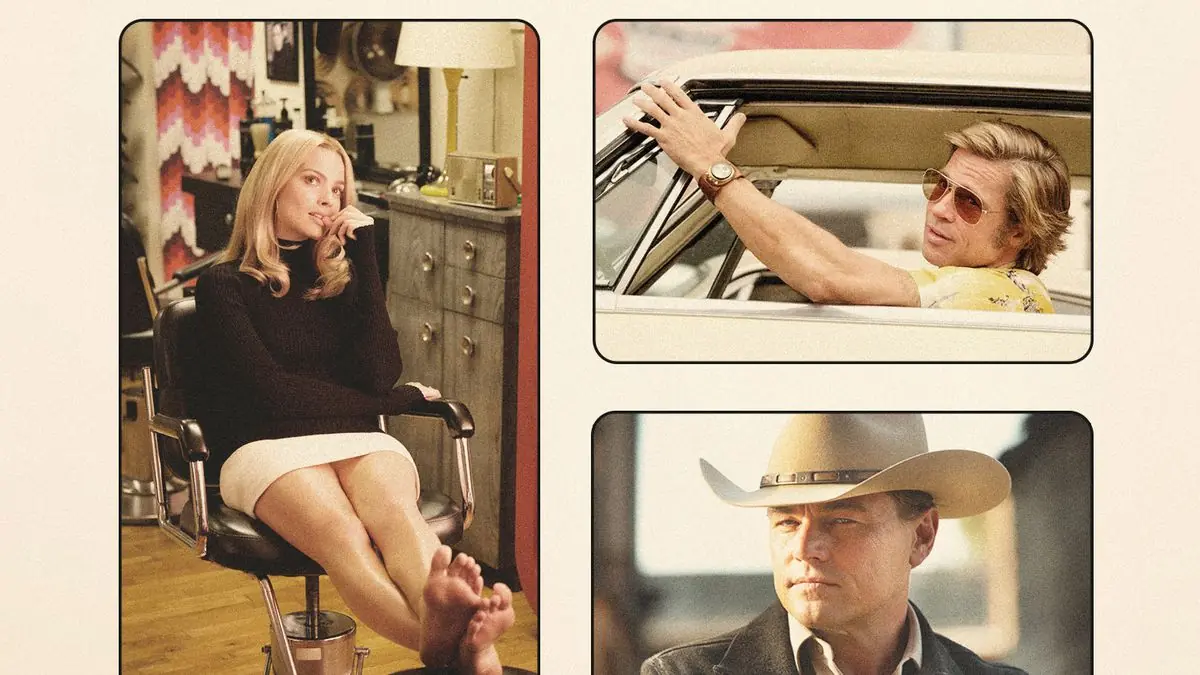
And now, what everyone’s been waiting for—a line spoken in the TV show Wojtek Frykowski watches just before the Manson family sets out on their hunt. Tarantino, in Once Upon a Time… in Hollywood, his most “linear” film to date, reveals himself as a skillful constructor of a rather straightforward narrative (for him) and a diligent builder of tension (and the scenes at Spahn Ranch made me wish the Kill Bill director would make a horror movie). Because we know how this story ends, and we’re subconsciously waiting for that ending. Tarantino expertly fuels that anticipation for the first two hours. The scenes with hippies wandering around LA and scavenging through dumpsters take on a menacing tone when we realize from the lyrics they sing that they belong to Manson’s cult. Manson himself appears briefly—and it’s for the best, as the film avoids the pitfall of fetishizing serial killers. This isn’t a movie about the founder of the Family; he doesn’t matter here. But that brief moment is enough to bring a chill (Damon Herriman’s acting cameo is brilliant). As viewers, we’re filled with unease and expectation. That’s why the final twist works so well—it flips those expectations, soothing the tension.
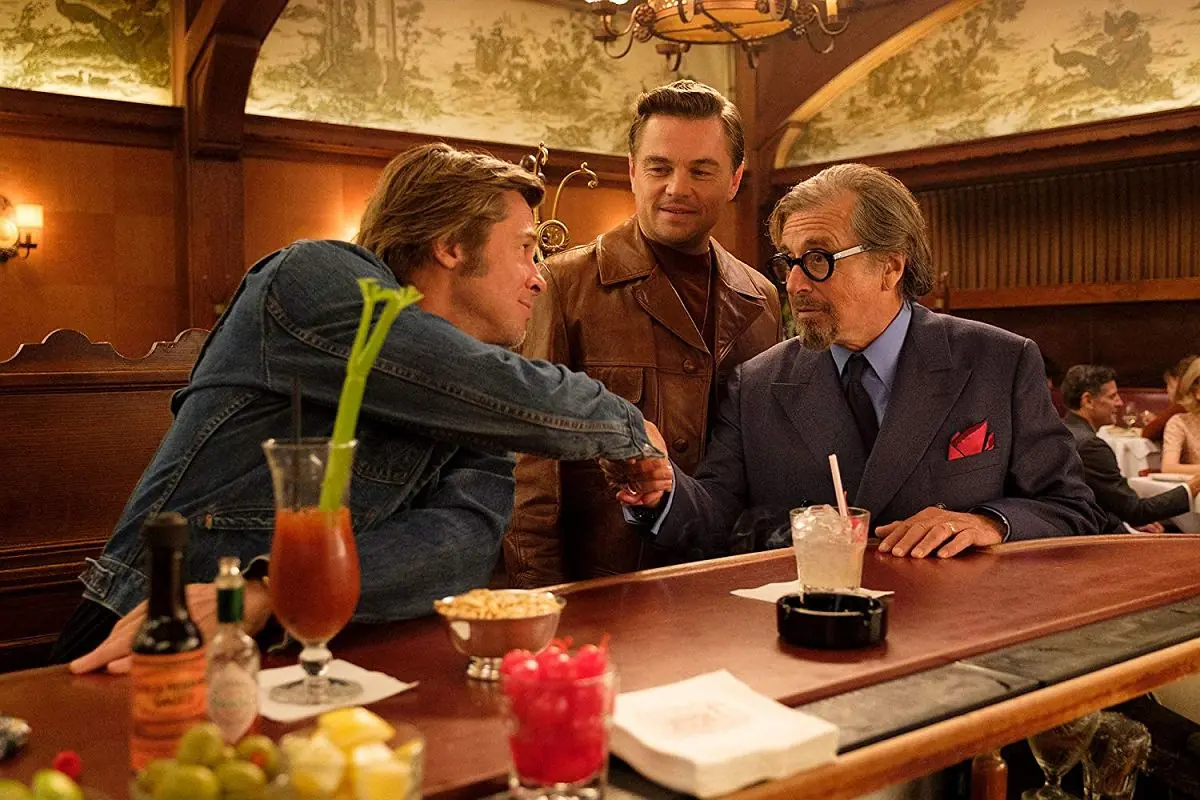
First of all, perhaps the line “and now, what you’ve all been waiting for” is a bitter, self-referential comment from a weary creator. Tarantino knows exactly what everyone has been waiting for. They’ve been waiting for him to churn out, for the ninth time, the same meal that’s been chewed over and over by pop culture but tasted so fresh when served in 1992 and 1994. And in Once Upon a Time in… Hollywood, viewers lingered in their seats for the entire first two hours, waiting for the highlights, the sharp dialogue, the blood. Maybe they found some comfort in the Bruce Lee scene, but overall, it was just the promise of the final massacre—Tarantino-style mayhem—that kept them from walking out. “And now, what you’ve all been waiting for,” the director mocks, fully aware that his audience has pigeonholed him, boxed him into a certain mold. He knows that few are interested in his expanding means of expression or his deviation from his usual style in Once Upon a Time in… Hollywood; most are just waiting for another footnote to Pulp Fiction.
And now, what you’ve all been waiting for, and what awaits everyone—death.
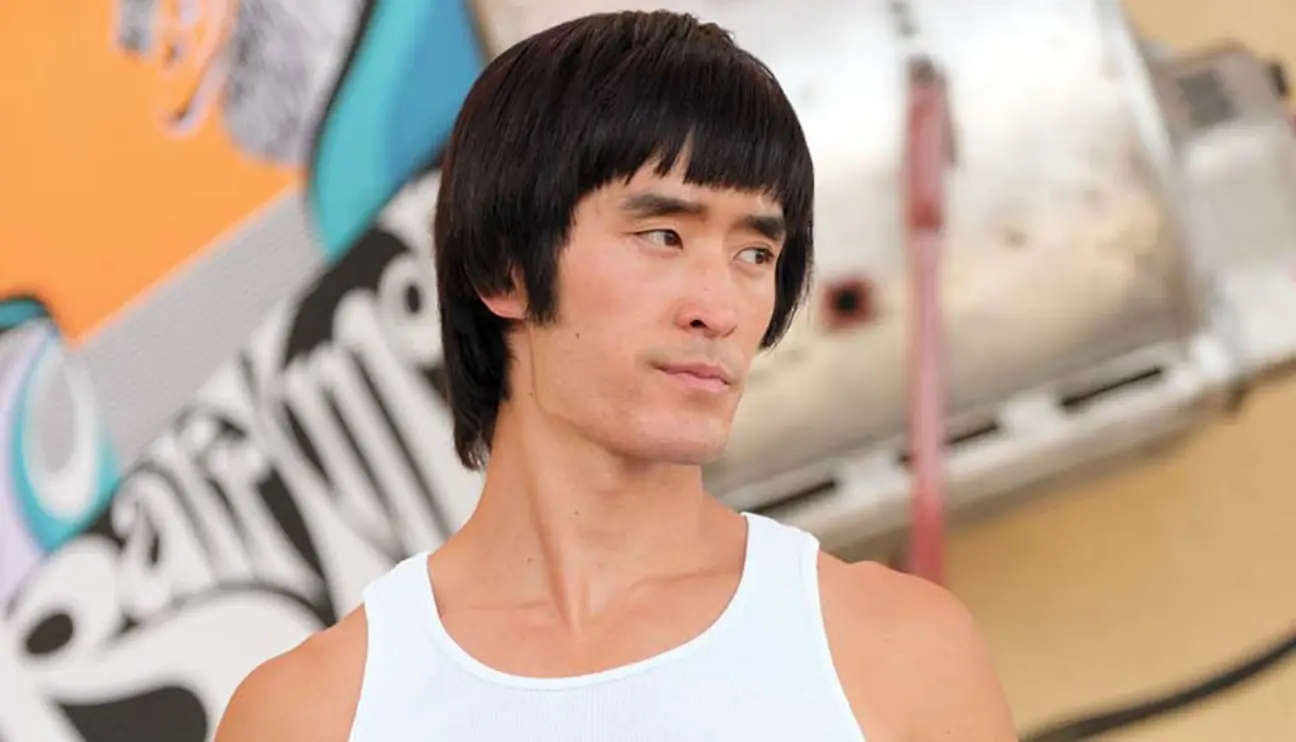
Susan Atkins burns alive. The same Susan who, earlier, while locked in a car with three other Manson kids, persuaded the group to go murder Rick Dalton instead of attacking the house at 10050 Cielo Drive. Her reasoning? The brutal movies he’d starred in, which she had watched since childhood and which supposedly drove her to kill. Atkins’ speech mirrors the accusations frequently leveled against Tarantino’s work, often criticized for glorifying violence. How does Tarantino respond to his critics? First, he smashes a dog food can into their faces, then bites those faces furiously, and finally finishes them off with a flamethrower. It’s more than telling that the director places his critics’ words in the mouth of perhaps the most depraved of Manson’s girls—someone who suffers one of the most horrific deaths of all Tarantino’s characters.
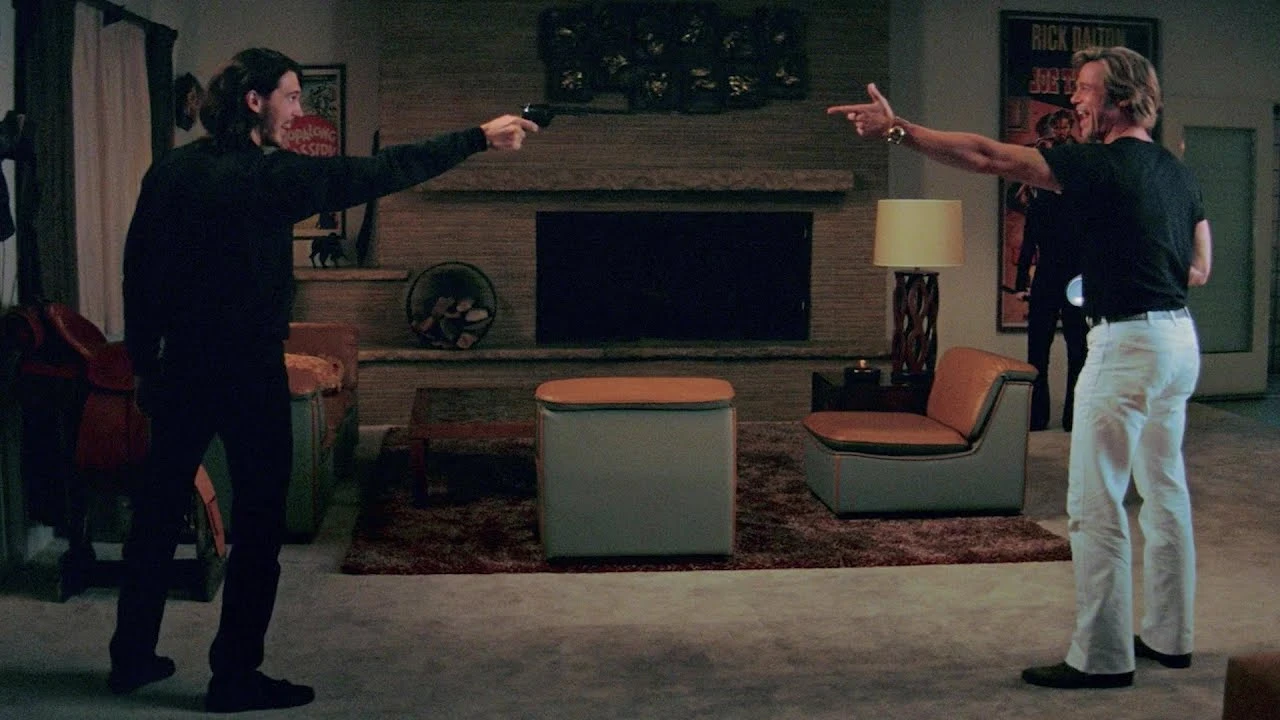
It’s as if he’s trying to shout once and for all what he’s repeated with growing irritation in interviews: stop blaming art for your own evil; even the most brutal film won’t turn someone into a murderer if they weren’t already disturbed. Atkins herself is portrayed as so manic that her rant about the corrupting influence of Westerns seems laughable next to the real factors that shaped her into a killer—drugs, Manson, a troubled childhood, and likely psychopathy. But most importantly, her gruesome death is a visual response to the question of violence in art, which, unlike the randomness of real life, has the power to annihilate evil and dispense justice. This carnivalesque slaughter of purification, this grotesque, slapstick execution, brings the viewer catharsis. Tarantino resurrects Sharon Tate and restores the audience’s faith in the healing, comforting power of storytelling, like the most fundamental tales—fairy tales. The old postmodernist, in what is (supposedly) his penultimate film, humbly returns to the roots of all narratives.
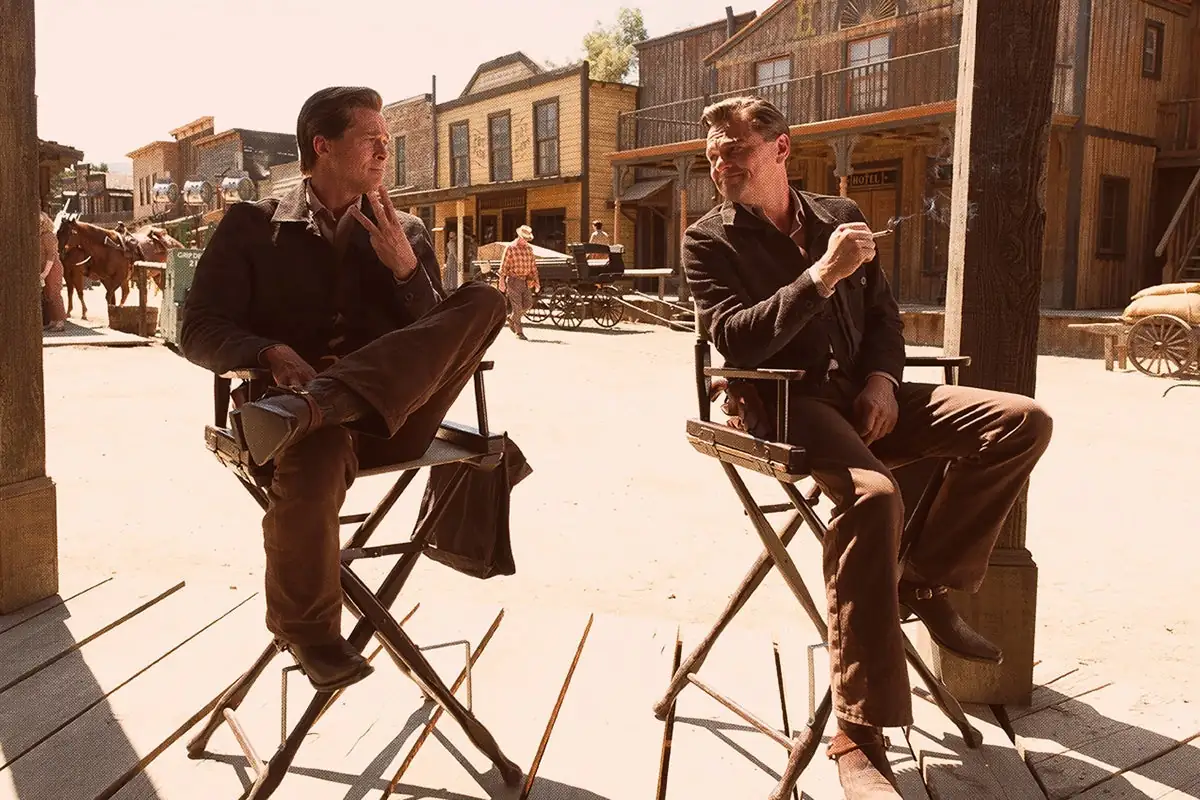
After all, fairy tales start with “Once upon a time” or “Long, long ago.” And so, here, our heroes saved the princess by slaying the monster. Innocence and the charm of the ’60s were preserved, for that’s what the entire film was about—the struggle between the foreboding ending and the colorful carefree events unfolding before our eyes. The real-life brutal crimes of Manson’s gang, which ended the flower child era symbolically, are in Tarantino’s fantasy world swiftly pacified, with blood-soaked justice meted out like in a folk tale—so we can indulge in the charm of the ’60s, its ideals, its heroes, and its culture, all of which were eroded by human weakness, foolishness, and, of course, the inevitable passage of time. But here, the darkness is held back, allowing the sunlit and vibrant hues of that world, so beautifully captured on camera, to shine. Like Fellini’s Satyricon, Tarantino’s historical fresco concludes by freezing the characters in time. Just as Fellini’s film ended with images of Romans painted on crumbling walls, Once Upon a Time in… Hollywood ends with a crane shot of four miraculously saved individuals, as if viewed from the clouds by a benevolent angel. And they lived happily ever after, you might add to the closing credits.
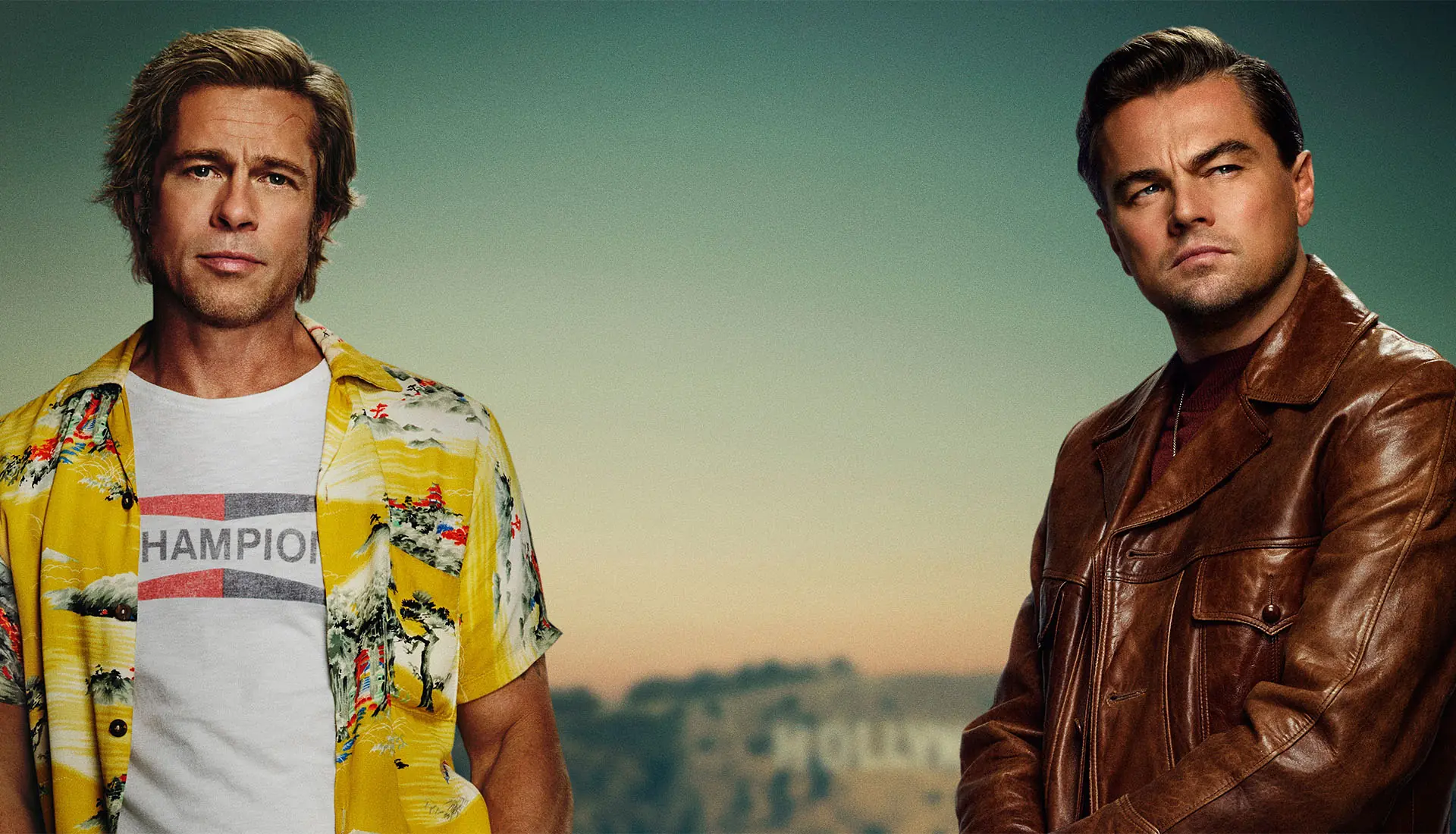
Apparently, Tarantino is bidding farewell to cinema. Perhaps that’s why he’s becoming sentimental. He got married (his wife appears briefly in Once Upon a Time in… Hollywood), and in a few months, he’ll become a father for the first time. Just after leaving the cinema, I book a ticket for an early screening of Pain and Glory. Another auteur’s testament, it seems, as Almodóvar is also contemplating leaving film behind. The fires in Siberia haven’t yet burned out, and now the Amazon is in flames (DiCaprio donated five million dollars to help save it). I take a slow, deep breath. I go for a walk with my dog while we still have oxygen in the ever-present smog. I don’t know how our era will end or what twist of fate led us to live in it. But after Once Upon a Time in… Hollywood, I want to linger a bit longer in the atmosphere of slow, quiet enjoyment of my own fleeting, mundane existence.

